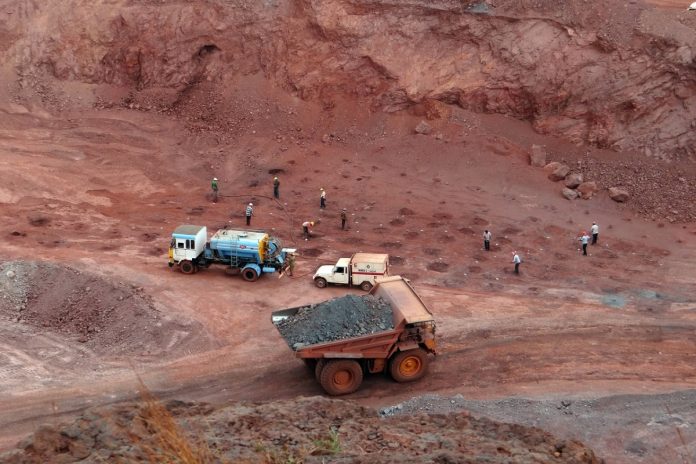The late Subir Raha, a former chairman and managing director of the Oil and Natural Gas Corporation (ONGC, 2001-2006), often regretted India’s lack of a strategic approach to the mining and minerals sector.
In those days, China was aggressively shopping mineral assets — from oil and gas to gold, cobalt, nickel, and rare earth — across the globe. But, beyond some oil and gas deals, India did not have much to speak about. It failed to monetise even the abundant coal reserves at home.
The situation didn’t change much over the years, as far as the acquisition of assets abroad and domestic production of minerals are concerned.
China moved significantly ahead in establishing control over key raw materials, like lithium, graphite, cobalt, and rare earth elements, all of which would dominate the energy and technology space for years to come.
However, on the brighter side, India is finally getting its act together.
Between February and October 2023, the Geological Survey of India (GSI) announced lithium finds in Jammu and Kashmir (J&K), Rajasthan, Karnataka, and Jharkhand.
At 5.9 million tonnes prognostic reserve, the J&K find is substantial.
Touted as ‘white gold’, lithium is critical for energy transition, aerospace, defence, and telecommunications.
The GSI exploration is preliminary in nature. India needs intense, high-density, commercial-scale drilling to ascertain the recoverable reserves.
However, given the strategic nature of the mineral, the find may go a long way in strengthening the supply chain, reducing import dependence, and protecting the economy from a strategic shock.
Currently, India imports its entire lithium needs.
Critical Minerals
Striking ‘white gold’ is part of a much bigger attempt to reform India’s mining space.
The change began in 2015 when the Narendra Modi government took the first steps to end the four-decade-old nationalisation of commercial mining in coal, the prime energy source of the country.
The legal framework for denationalisation was completed in 2019. Over the last four years, private commercial mining activity has taken off in over 70 coal assets. It has helped India to break many glass walls in policymaking. The benefits would accrue over the next decade.
In July this year, India released a list of 30 minerals that are “critical” for the national economy, most of them found in deep-seated reserves and many strictly in the government domain.
So far, India has failed miserably in their exploration and production.
The country is fully dependent on imports, particularly from China, for one-third of the critical minerals, including lithium, cobalt, nickel, vanadium, niobium, germanium, rhenium, beryllium, tantalum, and strontium.
In 2011, the Planning Commission (now NITI Aayog) highlighted the need for assured availability of these resources for the country’s industrial growth. However, the issue didn’t get the due attention, not until Narendra Modi came to power.
Between 2017 and 2020, the GSI and the Atomic Minerals Directorate for Exploration and Research shared several reports and master plans to explore strategic and rare earth minerals.
Between 2020 and 2023, the annual exploration projects in the critical minerals sector doubled from roughly 60 to 120. The result is visible in the unearthing of lithium deposits.
It was also time to unleash the private sector for efficient lithium extraction.
In August, the Centre amended the Mines and Minerals (Development and Regulation) (MMDR) Act of 1957 to declassify six minerals — beryllium, lithium, niobium, titanium, tantalum, and zirconium — from the list of atomic minerals.
To further sweeten the offer for prospective miners, India recently fixed the royalty rates for lithium and niobium at 3 per cent. For rare earth elements, the rate is pegged at 1 per cent.
Before the amendment, the minerals (notionally) attracted a 12 per cent royalty.
Overseas Acquisition
If Raha were alive, he would be happy that India is finally paying due attention to the domestic minerals sector.
To reduce supply-side concerns, the country should now acquire assets in overseas destinations where key minerals are abundantly available.
India has already formed a special-purpose vehicle, Khanij Bidesh India Limited (KABIL), with equity contribution from state-owned National Aluminium Company, Hindustan Copper, and Mineral Exploration Company to acquire lithium, cobalt, and rare earth elements abroad.
But the job is easier said than done. State-sector joint ventures have not proved effective in acquiring energy assets abroad in the past. The International Coal Ventures, promoted by Coal India, NTPC, and Sail Authority of India Limited, among others, was a big failure.
Hopefully, the Modi government will be able to solve the riddle this time. “KABIL has engagements with countries like Argentina, Australia etc, to acquire critical & strategic minerals assets,” as per a Ministry of Mines note.


